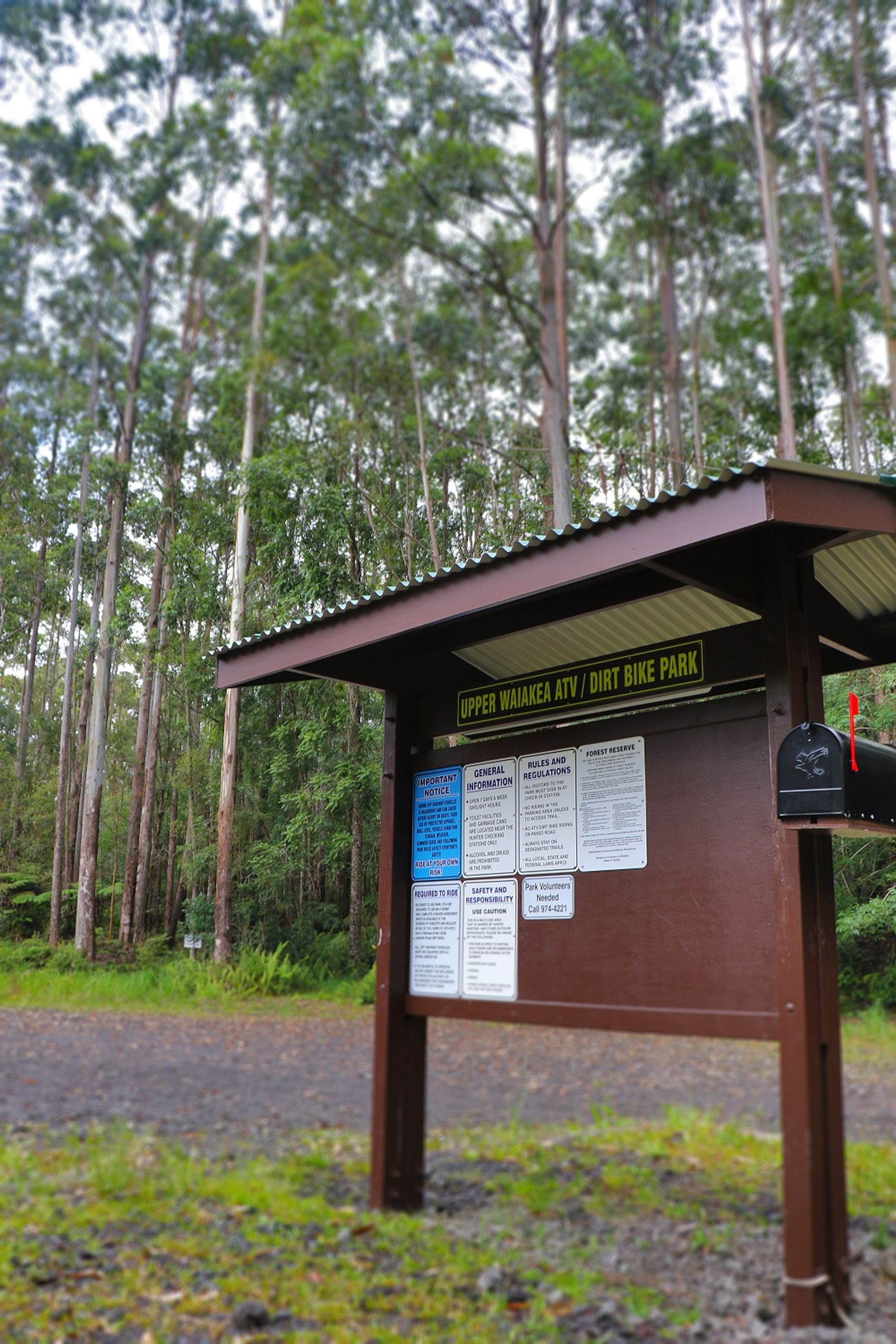The Upper Waiākea ATV/Dirt Bike Park is located on the slopes of Mauna Loa volcano, approximately 12 miles southwest of Hilo town and within the South Hilo and Puna districts. It is situated along the Stainback Highway and is a portion of the Waiākea Timber Management Area. The Park was established to meet the growing demand for Big Island ATV/Dirt Bike recreationists, while striving to protect and preserve the surrounding natural and cultural resources and foster respect for the environment.
To help you better identify and enjoy the Park. this guide will assist you in locating designated trails and areas for ATV/Dirt Bike recreation a well as give you the rules of the Park to ensure safe and responsible use. We hope you enjoy your visit to the Upper Waiākea ATV /Dirt Bike Park.




